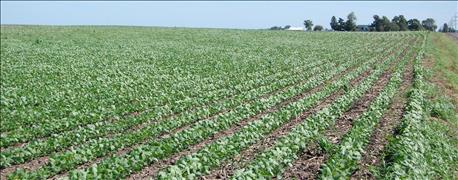June 5, 2016

I can hear it now, integrated pest management. . . Isn’t that for producers that don’t want to use chemicals?

Implement integrated pest management into your cropping system
Well, not exactly. Integrated pest management or IPM is a set of methods you use to manage pests to avoid economic damage to the crop. Many of us are familiar with the concept of economic thresholds such as controlling soybean aphids when there are 250 aphids per plant. Economic thresholds are when the value of the yield loss is greater than the cost of the control method. However in the past when grain prices were high, our risk tolerance levels for pests may have been lower allowing us to spend more on chemical controls. As grain prices remain low, it is important to have a well-defined plan to ensure pest levels stay below the recommended economic thresholds to maximize profits.
The first part of any IPM plan is scouting. Now I when I say scouting, it does not mean what my father in law calls “windshield farming” or checking fields from behind the wheel. I think we all have been guilty of that. Set aside some time and walk a zigzag pattern throughout the field looking for damaged or unhealthy plants. Also, take notice of what your crop looks like along the field edges where weed pressure may be higher making ideal conditions for pests to overwinter or lay eggs.
Knowing when and where to look for insects or diseases is key when scouting your crops. Some pests, such as slugs or cutworms, like to hide under residue or soil during the daytime especially when the sun is out and the temperature is warm. The best time to scout for these pests is early in the morning when conditions are cooler. If you need to scout during the day, bring a small garden shovel or pocket knife to examine the soil and residue around damaged plants to find the guilty suspect.
Weather conditions can also cause some pests to increase in population and others to decrease. An example of this is spider mites that prosper in hot and dry weather contrasted to other pests like the soybean aphid that need cooler weather. During these weather patterns, it may be necessary to scout the fields daily. When scouting, your fields, track the population of the pest by keeping a field journal. Be aware there are several fungi and predatory insects that may be keeping the pest in check for you, saving you time and money.
If the pest does reach the threshold level, then the next step of an IPM plan is deciding on which control measure is best suited for managing the pest. The methods used in an IPM plan take into consideration any adverse side effects to us, others, and the environment. For those of you who have taken the pesticide applicator training, I would hope you remember the discussion on cultural, mechanical, and chemical methods of pest control. Many of us go directly to the chemical control method, as let’s be honest it can be the most convenient management method to use. That does not mean that we shouldn’t explore the other methods first.
Cultural methods need some planning usually before planting. Cultural methods of control are used to break up the life cycle of a pest. Examples would be planting alfalfa after corn to decrease the population of corn rootworm larvae or modifying the irrigation schedule to control a fungal disease. A mechanical method of control usually involves tillage, but also includes mowing and mulching. Examples of mechanical control would be tillage to bury residue to control slugs or mowing tall weeds to control the spread of the weeds.
Following an IPM plan, will allow you to identify pests and utilize the best control measure to manage the pest. Your local county Extension agriculture agent is an excellent resource on what pests are in the area and can help guide you on management techniques. Remember a crop producer is always outstanding in their field!
Marzu is the Lincoln County and Marathon County Extension agriculture agent.
You May Also Like




